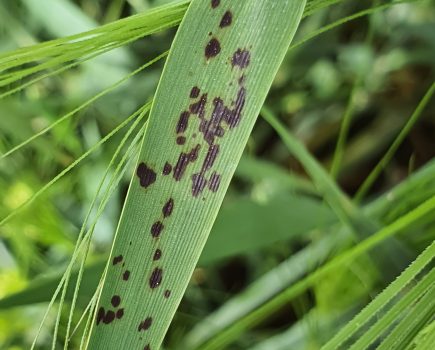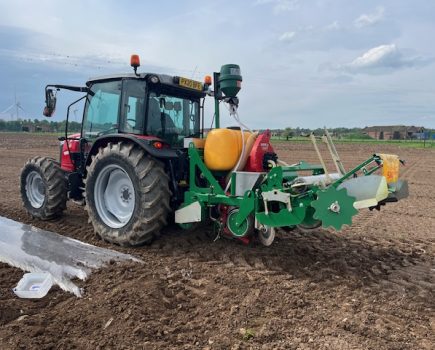Lizzie Batt, Hutchinsons agronomist, working from the Canterbury depot, picks seven key areas to focus on to get spring cereals off to a strong start.
1. Variety choice and target market
This depends on individual situations, soil types, proximity to local markets, etc, and while experienced growers with the right site may be able to reliably grow spring barley for low-nitrogen malting contracts, be realistic about your ambitions.
This is especially true when growing spring barley on heavy land, perhaps for blackgrass control, or where wet weather prevented autumn drilling. Achieving low-nitrogen malting specification is hard on heavy, fertile soils, so focus on yield instead. Modern spring barley varieties genetically have high yield potential, so can be pushed accordingly.
2.Terminating cover crops
Timing of cover crop termination before sowing spring cereals is important for residue management, surface moisture availability and minimising potential allelopathic effects or nitrogen lock-up in the following crop.
SFI overwinter cover crop rules such as CSAM2 allow cover to be terminated before the end of winter, but no more than six weeks before the following spring crop is sown. Anyone planning early March drilling cannot therefore terminate SFI cover until mid-January.
Where soils remained very wet last winter, there was poor active growth within many cover crops and grassweeds going into the new year, so consequently some struggled to achieve good results from a single dose of glyphosate. Sequences worked much better, though.
Recognise this risk if planning to terminate cover crops or other winter growth in early/mid-January, and be prepared to apply a follow-up glyphosate treatment pre-drilling if required. Higher rates are typically used at the first timing, reducing for the second where appropriate.
3. Drilling date
Spring cereals do not require vernalisation, so once germinated, they inherently want to grow rapidly in the shorter season, only spending limited time tillering.
Avoid drilling too early, especially if soils are cold and wet with little sign of improving. Seed will germinate from 5°C onwards but ideally should go into soil that is continually warming to avoid the risk of seed germinating and then not growing until temperatures rise.
4. Seedbed preparation
Good seedbed preparation is vital for rapid crop establishment. Drill seed into moisture and ensure good seed-to-soil contact, consolidating well to conserve moisture.
5. Seed rates
For optimum yield in spring barley, aim to establish 750 to 1,000 heads/m2, tailoring seed rate to drilling date and seedbed conditions.
Spring barley tillers strongly, so when drilling in late February/early March on heavy land, rates are likely to be around 400 seeds/m2.
Generally, less seed is required when drilling later, as crops should tiller better in warmer conditions, but by late April/early May, seed rates will need to increase again given much less time for tillering.
Spring wheat lacks the tillering capacity of spring barley and typically has smaller ears containing fewer grains, and so higher seed rates are needed to drive yield. Target a head count of 500-600/m2, which for March drilling is likely to mean sowing around 600 seeds/m2.
Maintaining a higher plant population also improves crop competitiveness over grass and broadleaved weeds.
6. Fertiliser
Placement fertiliser is highly recommended in spring crops, especially for phosphorus, which is crucial to root development and tillering.
Placing nutrients in the rooting zone greatly improves uptake efficiency compared with surface applications, facilitating stronger establishment and root development and allowing crops to quickly build scavenging ability for water and nutrients. This is particularly important where seed may be going into colder soils and in dry springs, where moisture availability can be a big limiting factor.
Apply most (around 80%), if not all nitrogen into the seedbed at drilling, varying rates according to soil conditions and yield potential. The remaining 20% should be applied by the four-leaf stage. Consider a foliar methylated urea top-up if conditions are dry, as uptake may be better than with soil-applied granular fertiliser.
7. Moisture availability
For late spring drilling dates (April onwards), watch long-term weather forecasts closely and make decisions on a daily basis as water availability post-drilling is crucial to crop success. If a long, dry spell after drilling is forecast, you may need another plan.
For more like this, sign up for the FREE South East Farmer e-newsletter here and receive all the latest farming news, reviews and insight straight to your inbox.







